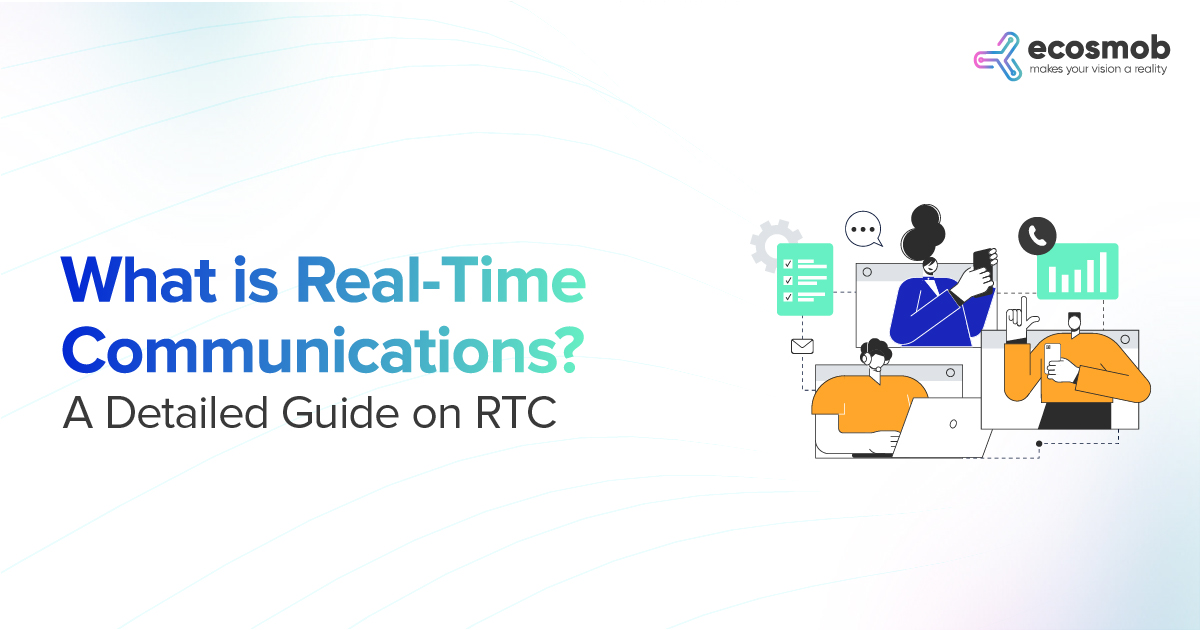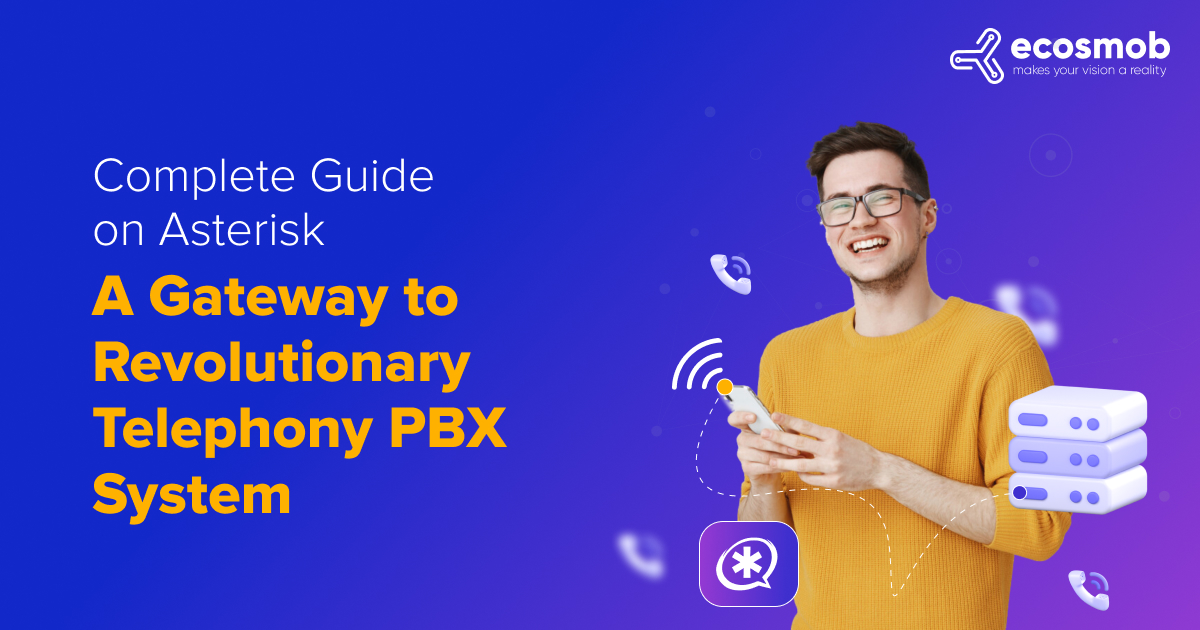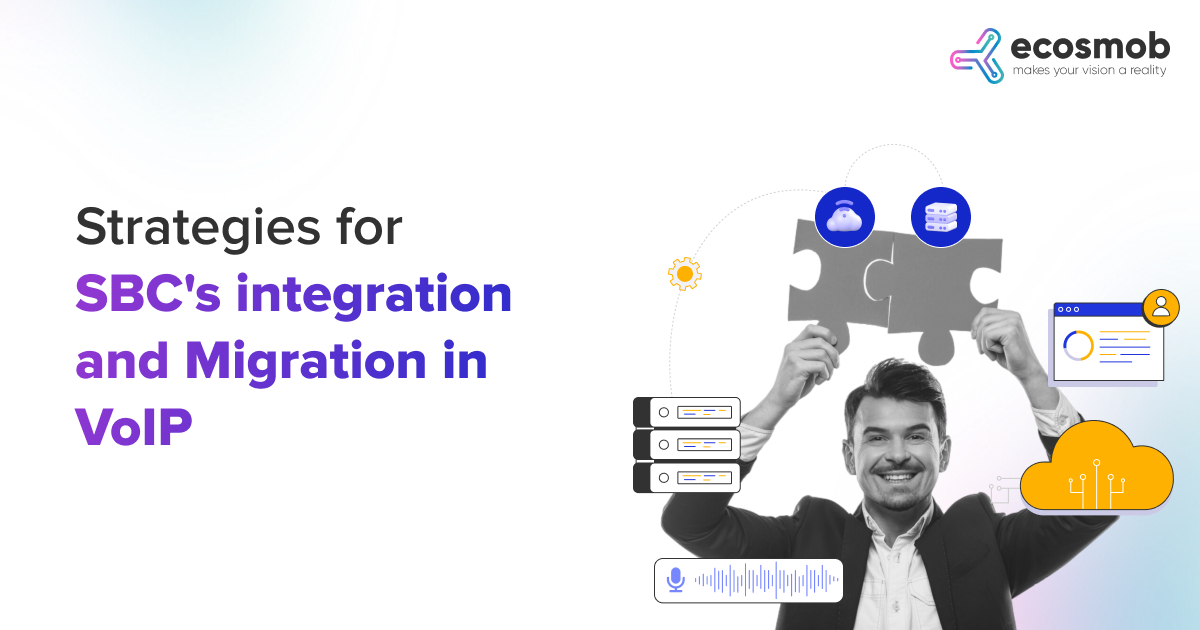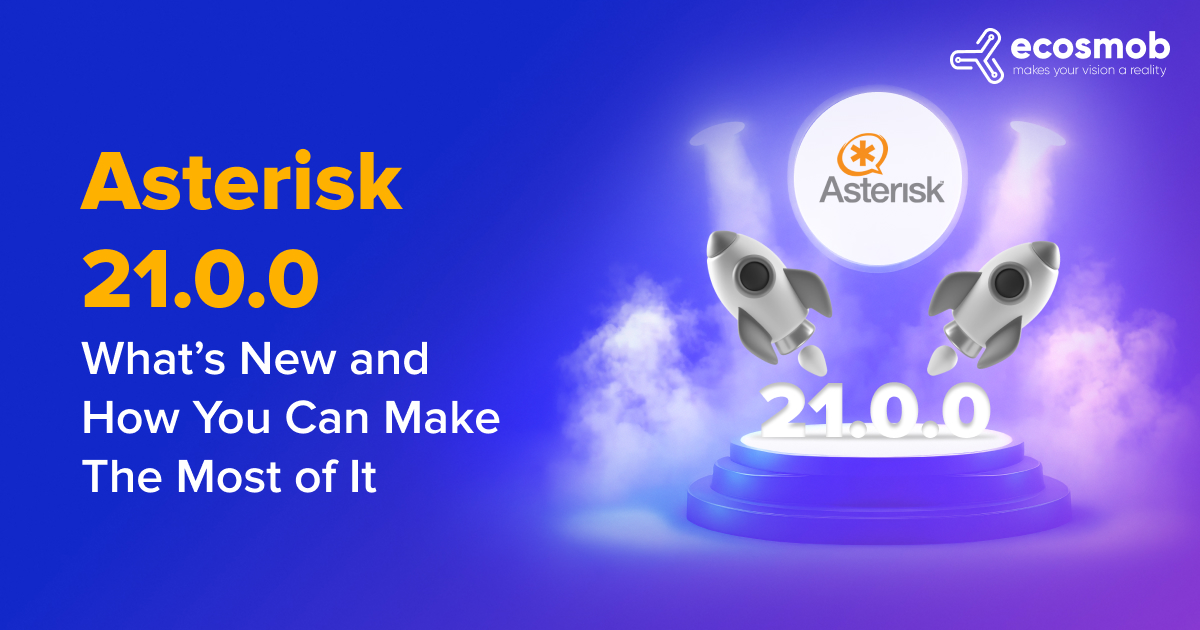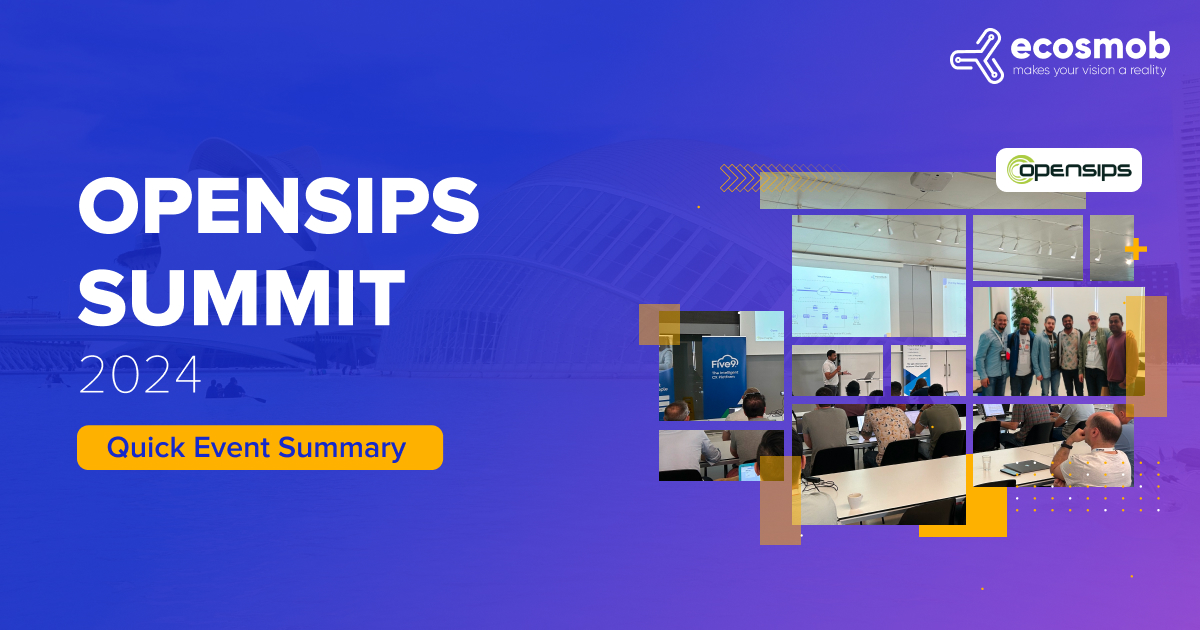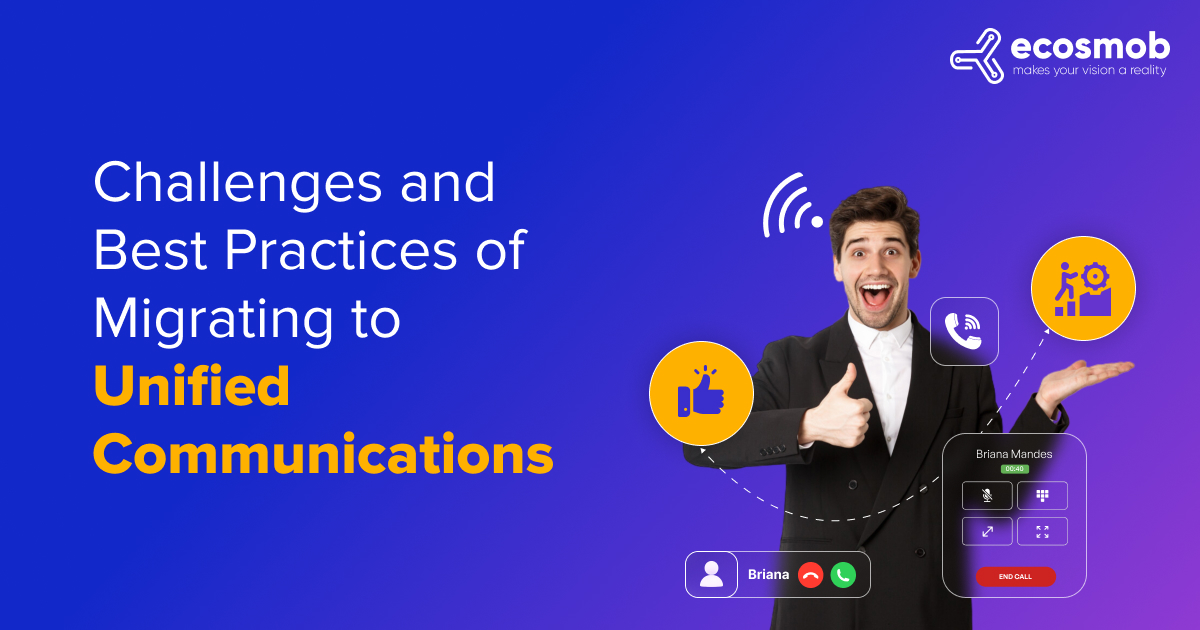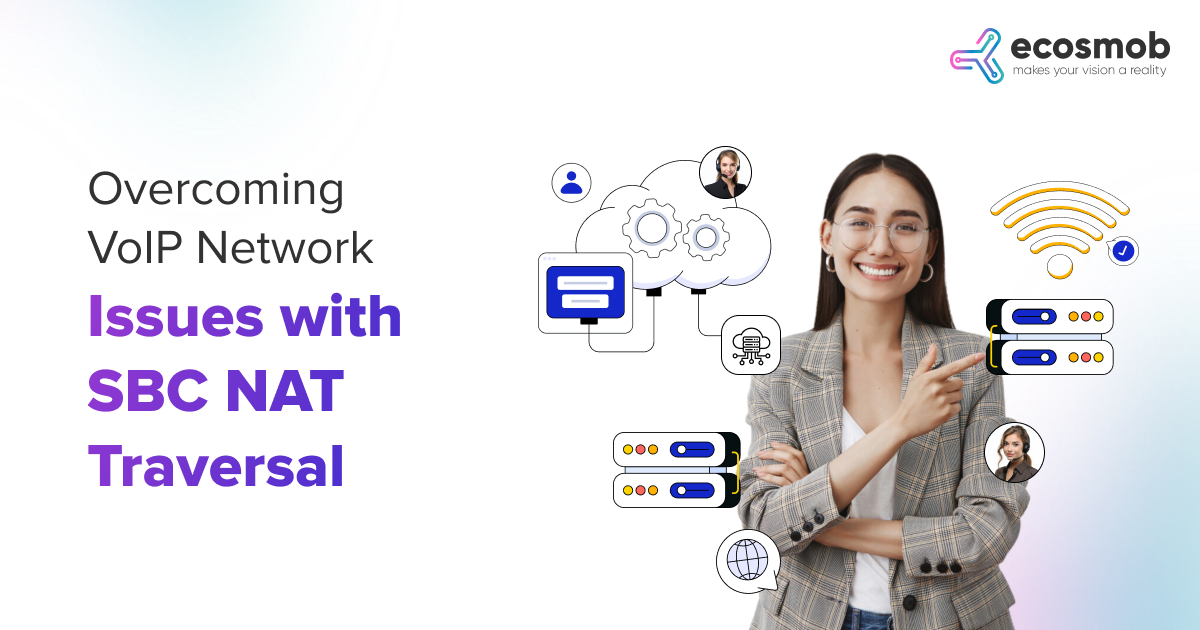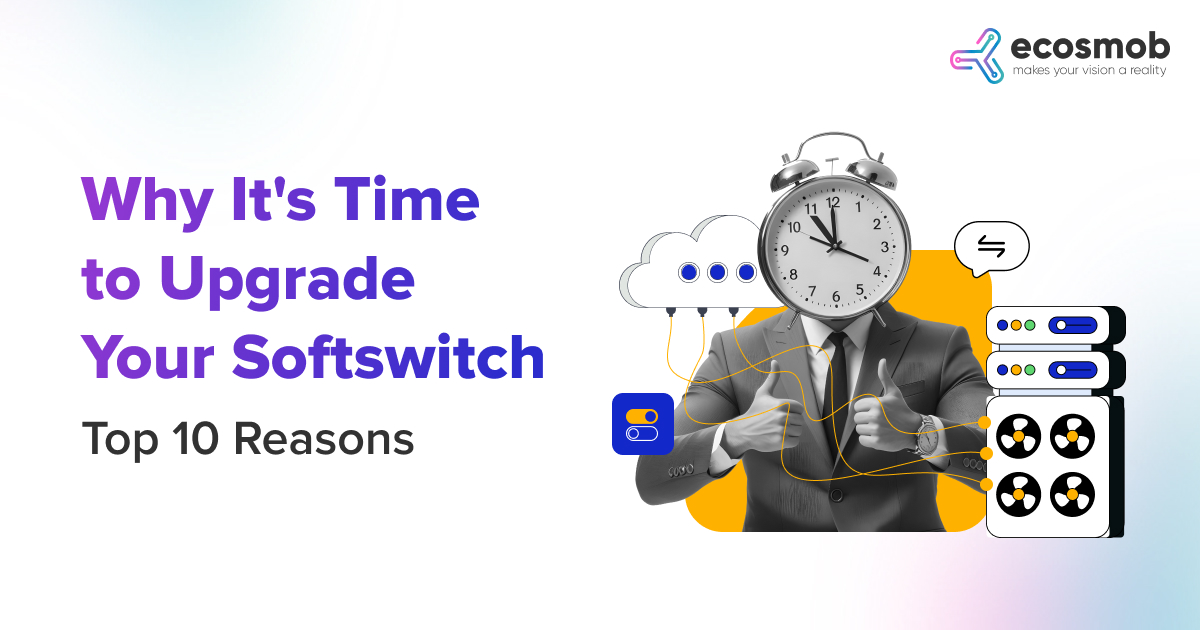Welcome to the ultimate guide on Asterisk, the cutting-edge open-source framework reshaping how businesses communicate globally. If you’re keen to dive into the world of Asterisk solutions or wondering how to boost your operations with specialized Asterisk development services, you’ve landed in the perfect spot. This guide is crafted to delve into the complexities of Asterisk PBX software, offering an in-depth look at how this technology can serve as the cornerstone for scalable, robust communication systems.
Whether you are a small business or a large corporation, the Asterisk framework provides the tools to innovate and transform your telephony capabilities. Let’s delve deep into Asterisk’s versatile and powerful features that stand ready to elevate your organizational communications.
What is Asterisk?
Asterisk is an open-source framework renowned for its flexibility in creating multifaceted communication solutions. It’s not just any telephony system; it is the foundation for IP PBX systems that are customizable and adjustable to suit the changing needs of modern businesses.
An average computer can become a communication server with the help of an Asterisk framework. Conference servers, VoIP gateways, IP PBX systems, IAX (Inter-Asterisk eXchange), H.323, and specialized solutions are all powered by an Asterisk. Call centers, carriers, government agencies, small and large businesses, and call centers also leverage the power and reliability of Asterisk services. It is an open-source and free-to-use framework sponsored by Sangoma.
Get a Competitive Edge with Our Innovative Asterisk Solutions
Architecture of Asterisk
The architecture of Asterisk is modular, comprising several components that work together to deliver comprehensive communication services. At its core, Asterisk is a server for managing voice calls, messaging, and other communication protocols such as SIP and IAX. Key architectural elements include:
- Core: It is the heartbeat of any Asetrisk system. It reads the configuration file, dialplan loads other files, and manages the integration of various communication channels and protocols.
- Modules: Functional blocks can be added or removed to extend the capabilities of Asterisk, including VoIP modules, codec modules for different audio and video formats, and routing modules.
- Dialplan: A scriptable part of Asterisk that defines how calls are handled and routed within the system. It allows for highly customizable call logic.
- Interfaces: Asterisk provides several interfaces for system integration, including AGI (Asterisk Gateway Interface) for programmatically controlling Asterisk from external applications and AMI (Asterisk Manager Interface) for administrative tasks.
Configuration Files: These files are crucial for tailoring Asterisk to specific needs, allowing detailed customization of every aspect of telephony services.
Core Features of Asterisk PBX System
Asterisk’s architecture allows it to stand out as an advanced Asterisk PBX system with features that can be tailored to specific business requirements. Here’s what makes it a top priority:
- VoIP Integration: Asterisk seamlessly integrates with Voice over Internet Protocol technologies, enabling businesses to conduct voice communications over the Internet. It reduces costs and enhances flexibility by merging Internet and telecommunication services.
- SIP Trunking: The system supports Session Initiation Protocol trunking, which allows the connection of an Asterisk PBX to the Internet telephony service provider (ITSP) without requiring physical phone lines. This capability enables direct Internet calling and substantial cost savings.
- Multi-Tenant Capabilities: Asterisk can serve multiple tenants or separate organizations from a single installation. This feature is particularly beneficial for hosted PBX providers or large organizations with distinct divisions requiring separate telephony systems.
- Dynamic Interactive Voice Response: Asterisk allows creating dynamic and customizable IVR systems to guide callers through menu options using voice responses. It is crucial for improving customer service efficiency and handling high call volumes effectively.
- Call Center Support: Asterisk is equipped with functionalities essential for call centers, including call queuing, agent management, and call recording. These features help manage large volumes of calls and provide detailed performance analytics.
- Scalability and Flexibility: Being an open-source framework, Asterisk offers excellent scalability and flexibility, allowing businesses to expand their telephony systems as they grow. Developers can customize and extend their capabilities to meet specific business needs.
- Comparison with Other Frameworks: Unlike many proprietary solutions, Asterisk provides a cost-effective yet powerful alternative with extensive community support and customization potential. While it does not directly compete with frameworks like FreeSWITCH in every aspect, it offers unique benefits in its versatility and integration capabilities.
- Robust Telephony Features: Asterisk includes all the standard features expected in a modern telephony system, such as call forwarding, voicemail, conferencing, and automatic call distribution.
How Asterisk Enhances Call Center Operations?
Implementing an Asterisk call center can significantly empower a business’s ability to provide exceptional customer service. Here’s how this Asterisk software leverages its capabilities to transform traditional call center operations:
Advanced Call Routing and Management
One of the fundamental strengths of the Asterisk PBX system is its sophisticated call-routing capabilities. With dynamic IVR Asterisk technology, callers can be automatically directed to the appropriate department or support staff based on their input. This feature enhances customer experience by reducing wait times and optimizes agent workload distribution. Furthermore, Asterisk’s PBX features support conditional call routing based on the day, caller ID, and other criteria, ensuring calls are handled efficiently.
Scalability and Flexibility
Asterisk’s architecture is inherently scalable, a vital feature for growing businesses. As call volumes increase, Asterisk call centers can quickly scale up to accommodate more concurrent calls and expand with additional functionalities without needing a complete system overhaul. This scalability allows businesses to change demands seamlessly, a significant advantage when evaluating Asterisk vs. any other framework.
Enhanced Communication Capabilities
Integrating Asterisk VoIP technologies transforms call center operations by allowing voice, video, and data services to converge into a single unified channel. Asterisk SIP trunk services extend this functionality by enabling sessions over IP, thereby reducing costs associated with traditional phone lines and improving the quality of multimedia communications.
Multi-Tenancy
For organizations managing multiple products or services, Asterisk’s multi-tenant capabilities allow for creating several independent PBX environments within a single software instance. It is ideal for businesses operating numerous call centers or serving various geographic locations, providing tailored customer service experiences under one unified system.
Cost Efficiency
Asterisk Solutions offers a cost-effective alternative to traditional proprietary call centers. Asterisk PBX software eliminates the need for expensive licensing fees associated with other telephony systems, and its compatibility with VoIP reduces call costs significantly. It is ideal for businesses with minimal investments to enhance their telephony infrastructure.
Customizability and Integration
Finally, the Asterisk framework’s open-source design enables substantial customization to satisfy particular business requirements. Asterisk development services can tailor features such as call queuing, reporting, and analytics to provide deeper insights into call center operations, thereby improving decision-making and strategic planning.
How to Implement Asterisk in Your Business
Integrating Asterisk software into your business is a strategic decision that can transform your telecommunication capabilities. Let’s explore step by step how to incorporate this robust Asterisk framework into your operations effectively.
Assess Your Current Telephony System
Begin by evaluating your existing telephony infrastructure. Understand the limitations and challenges of your current setup. This assessment will help you to understand the key Asterisk PBX features that will best address your needs, whether enhancing voice services with Asterisk for VoIP, implementing a robust Asterisk SIP trunk, or exploring the possibilities of a dynamic IVR Asterisk system.
Plan Your Asterisk Integration
You can start planning your integration with a clear understanding of what Asterisk can offer, such as its scalable Asterisk call center capabilities and multi-tenant environments. Outline your objectives: cost reduction, improved service reliability, or enhanced customer interaction. Planning should involve deciding on the necessary Asterisk solutions and Asterisk PBX software tailored to fit the unique demands of your business.
Develop and Customize Your Solution
Hire Asterisk developer services to tailor your system to your business’s requirements. Whether it’s customizing the user interface of your Asterisk telephony system or integrating third-party applications to work seamlessly with your Asterisk software, this phase is crucial for adapting Asterisk’s extensive capabilities to your operational needs.
Rigorous Testing of Your New System
Before going live, it’s critical to thoroughly test your new Asterisk PBX system in a controlled environment. This testing should simulate real-world usage to identify potential issues with call flows, Asterisk VoIP connectivity, or Asterisk SIP trunk configurations. Ensuring all components work harmoniously together guarantees a smoother transition for your business operations.
Deploy and Train Your Team
After testing, deploy your new system across your organization. Ensure all endpoints are properly configured, and the Asterisk framework supports all intended functionalities. Training is also vital; ensure your IT staff and end-users are comfortable with the new system’s features and functionalities. Proper training reduces the learning curve and helps achieve high user adoption rates.
Ongoing Support and Optimization
Post-implementation, maintain an environment of continuous improvement and optimization. Regularly update your system, utilize Asterisk development services for enhancements, and constantly monitor new Asterisk PBX features and updates that can improve system performance and efficiency.
Why Choose Asterisk?
Selecting Asterisk PBX software isn’t just about upgrading your telephony system—it’s about transforming your communication strategy from the ground up. When deliberating on which telephony solution to adopt, it is crucial to understand what Asterisk is and its multifaceted capabilities. Asterisk stands out not just as software but as a comprehensive Asterisk framework capable of transforming traditional telephony into a dynamic and integrated communication system.
Moreover, Asterisk’s cost-effectiveness in implementing VoIP communications is unmatched, particularly when utilizing Asterisk SIP trunk services, which help reduce traditional telephony costs as calls are routed over the internet. The platform’s scalability and flexibility support everything from small single-office setups to large, complex Asterisk call centers. With strong community support and proven reliability, choosing Asterisk means investing in a technology that meets current communication needs and evolves with your business.
Embracing Asterisk for Future-Proof Communications with Ecosmob Technologies
By now, you should have a robust understanding of how Asterisk can revolutionize your business communications by integrating an Asterisk telephony system with its dynamic IVR, multi-tenancy, and comprehensive VoIP solutions capabilities. Embracing Asterisk means not just upgrading but transforming your communication strategies to be more flexible, cost-efficient, and scalable.
If you want to deploy Asterisk, partnering with a seasoned expert in the field can significantly enhance the implementation process. We at Ecosmob Technologies are one of the renowned Asterisk development companies with expertise in building custom and open-source VoIP solutions. Our experienced Asterisk developers hold a detailed understanding of each feature of this open-source VoIP development platform and how to turn scattered features into a full-fledged communication solution. With our careful Asterisk development services, we employ an agile methodology to provide the best phone solution.
Ready to take the next step? Explore further how Ecosmob Technologies can help you leverage Asterisk to propel your business communication into a new era of efficiency and customization. Embrace the future of communications with Asterisk and Ecosmob, and watch your business thrive in the digital age.
Learn Asterisk with our Experts & Gain a Competitive Edge
FAQs
How does Asterisk differ from other telephony frameworks?
Asterisk is known for its versatility and comprehensive feature set, which includes capabilities like voicemail, call routing, and IVR. Unlike many proprietary solutions, Asterisk offers extensive customization options through its modular architecture, making it a preferred choice for developers looking to tailor telephony solutions to specific business needs.
What development services are available for Asterisk?
Development services for Asterisk include custom PBX setup, module development, CRM integration, and system maintenance. These services are crucial for businesses looking to customize their telephony infrastructure to fit specific functional requirements or to integrate seamlessly with existing systems.
How does Asterisk support VoIP?
Asterisk supports VoIP using protocols such as Session Initiation Protocol and IAX (Inter-Asterisk exchange). This capability allows handling voice communications over internet networks, significantly reducing costs and improving scalability and flexibility.
What is an Asterisk SIP trunk?
An Asterisk SIP trunk directly connects the hosting server and an ITSP (Internet Telephony Service Provider) without using traditional telephone lines. This connection allows transmitting call data over the Internet, offering cost savings and enhanced business functionality.
Can Asterisk handle multiple tenants?
Yes, Asterisk can be configured to handle multiple tenants, making it an ideal solution for service providers who need to manage separate communication systems for different customer groups from a single server instance.
